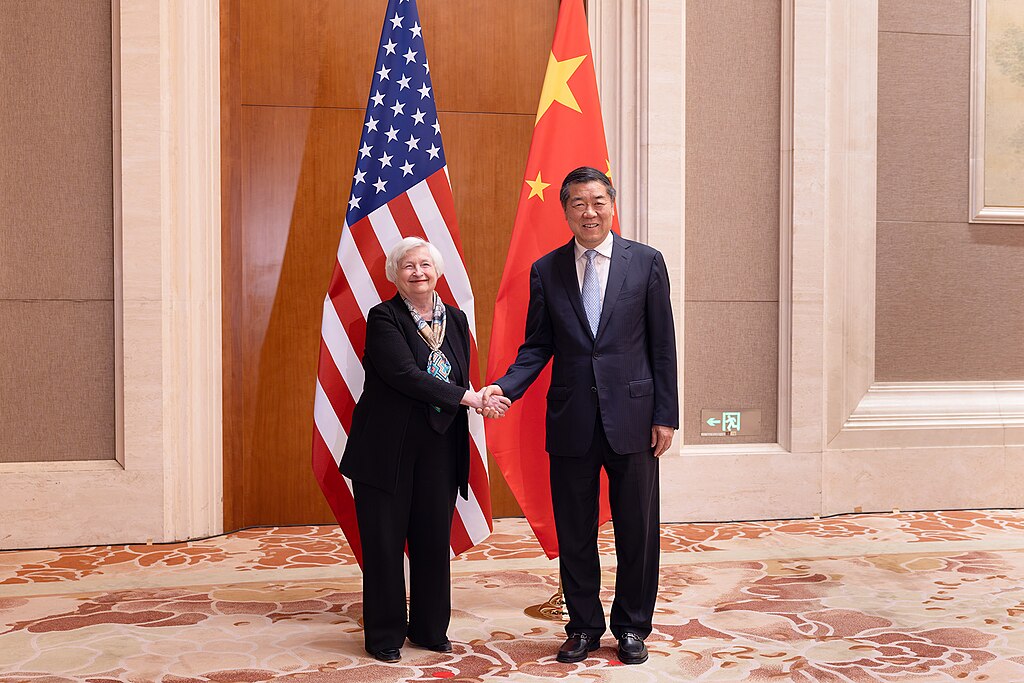Notwithstanding the United States’ industrial might, wealth and technical know-how, achieving the decarbonization and energy security goals set by the Biden-Harris administration is easier said than done. Because while recent legislation has unleashed an unprecedented sum of public money for the clean energy transition, it’s clear that marshaling climate action at this scale is as much a matter of industrial policy as it is foreign policy.
This dynamic is especially apparent in the electric power space, which consists of electricity only and combined heat and power (CHP) plants whose primary business is to sell electricity, or electricity and heat, to the public. The White House aims to decarbonize it by 2035. Indeed, beyond the clear need to channel investment toward renewable power additions, as the Inflation Reduction Act (IRA) promises to achieve, the U.S. must ensure that electric utilities and other power providers have the hardware and equipment they need to deliver.
Enter China, America’s foremost geopolitical competitor and, arguably, its most indispensable trade partner. China manufactures over 80% of the world’s polysilicon, the essential material in solar photovoltaics, and other solar panel components. But that’s not all. Across the global clean energy landscape, China boasts a stranglehold on the supply of critical minerals and the production of components needed not just for solar cells, modules and wafers, but for batteries, wind systems and other energy transition technologies. This imbalance sits at the epicenter of U.S. economic competition with China and, perhaps obviously, poses significant implications for America’s energy transition.
For Washington’s part, the IRA aims to help level the playing field by shoring up U.S. clean energy supply chains, expanding the menu of domestically sourced clean energy options and, in return, dramatically reducing reliance on China. Yet, as was demonstrated over the course of U.S. Treasury Secretary Janet Yellen’s recent mission to Beijing, the bitter irony is that the U.S. simply does not possess the capacity to produce these emissions reducing technologies on its own. And should Washington maintain its efforts toward “friendshoring,” via the ongoing implementation of the IRA and follow-on policies, it invites risk of retaliatory measures by Beijing that will delay, or worse, outright scuttle the country’s incremental decarbonization objectives.
Sec. Yellen’s job, then, was to walk that tightrope: keep China supplying what we need while not forfeiting our drive to friendshore critical domestic capacity.
It was a tall order heading into her trip. Tit-for-tat protectionist and national security measures have marked the U.S.-China relationship of late: China imposing fresh restrictions on critical minerals including gallium and germanium exports, two metals used in the production of solar panels and semiconductor chips, while the Biden administration restricts semiconductor exports and mulls additional curbs on sales of AI chips to China, while keeping in place tariffs on more than $300 billion worth of imports from China imposed by the preceding administration.
Accordingly, and as anticipated, Yellen’s trip yielded no breakthroughs, but she was able to deliver the important message that the world’s two largest economies and greenhouse gas emitters need to seek cooperation, keep open lines of communication, and pursue – as she put it – healthy economic competition.
We have our work cut out for us.
Take America’s solar industry which, over the last decade, has ceded approximately 80% of its global market share in solar component production. Indeed, only a few months prior to the enactment of the IRA, the U.S. DOE concluded that the country faces an “acute shortage” of domestically produced solar equipment, estimating that U.S. manufacturing capacity alone could meet less than a quarter of near-term market demand and less than a tenth of what would be needed to meet Washington’s “climate and energy security needs.”
With that, it stands to reason that while the IRA provides generous tax credits for both installation of solar facilities and the domestic manufacture of their component parts, the confluence of project permitting delays, grid interconnection backlogs, infrastructure and labor constraints, and yes, import-dependent supply chains is all but guaranteed to protract mission achievement.
But there’s reason for optimism yet. With support from state and local governments in the U.S. Southeast especially, American companies are announcing big plans for billions of dollars in green manufacturing projects. The solar industry declares a domestic manufacturing boom is underway. At the time of this writing, SEIA, the de facto voice of the U.S. solar industry, projects that domestic module production capacity is on track to exceed 60 GW per annum by 2026, ahead of the 50 GW by 2030 goal targeted by the organization only a few months ago.
Despite this promising future, though, the authorization, financing, and operationalization of manufacturing facilities take time. Our current reality requires access to Chinese mines and factories in order to power the transition to a clean and secure energy system. Making the U.S. more competitive is a formidable undertaking when one considers that China currently boasts a whopping 392 GW in cumulative solar capacity — more than the rest of the world combined.
The good news is that despite macroeconomic headwinds, geopolitical tensions, and supply chain constraints, the speed of the clean energy transition is accelerating at a record pace. Last year, investment in global low-carbon energy technologies topped $1 trillion for the first time.
The central tension at the heart of the IRA – limiting dependence on competitors like China while undergoing an energy transition that we cannot accomplish without them – will inform, and even dictate, so much of U.S. policy going forward. It will impact trade and industrial policy, climate policy, energy policy, and even national security. Sec. Yellen acquitted herself well walking this tightrope in China.
Yet while she may have been the latest to walk the tightrope, she will not be the last.

Mona Dajani is the global head of renewables, global head of energy & infrastructure, and Americas head of the hydrogen and ammonia practice with the global law firm Shearman & Sterling.
The views and opinions expressed in this article are the author’s own, and do not necessarily reflect those held by pv magazine.
This content is protected by copyright and may not be reused. If you want to cooperate with us and would like to reuse some of our content, please contact: editors@pv-magazine.com.








By submitting this form you agree to pv magazine using your data for the purposes of publishing your comment.
Your personal data will only be disclosed or otherwise transmitted to third parties for the purposes of spam filtering or if this is necessary for technical maintenance of the website. Any other transfer to third parties will not take place unless this is justified on the basis of applicable data protection regulations or if pv magazine is legally obliged to do so.
You may revoke this consent at any time with effect for the future, in which case your personal data will be deleted immediately. Otherwise, your data will be deleted if pv magazine has processed your request or the purpose of data storage is fulfilled.
Further information on data privacy can be found in our Data Protection Policy.